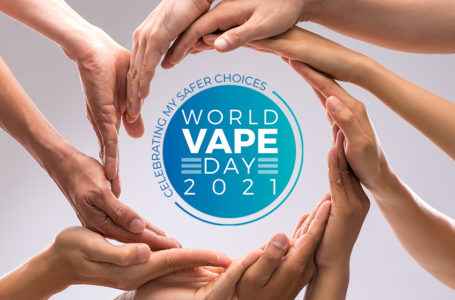Public health advocates advised the World Health Organization (WHO) that harm reduction is key to ending the smoking problem globally.
Dr. Lorenzo Mata, president of Quit For Good, a non-profit group promoting harm reduction in the Philippines, made the statement as delegates from more than 180 member-countries of the WHO Framework Convention on Tobacco Control (FCTC) participate in the 10th Conference of the Parties (COP) being held in Panama this week.
Dr. Mata called on the WHO FCTC delegates to consider tobacco harm reduction (THR) principles, allowing smokers access to safer alternatives. He supported the statement of Jeffrey Smith, a resident senior fellow at American think tank R Street Institute, that “if the WHO FCTC would only grant adult smokers access to affordable, reduced-risk nicotine products, millions of lives could be saved, and public health outcomes could be improved across the globe.”
Dr. Mata said that that WHO FCTC should explore THR and other science-based innovations to address the global smoking epidemic and prevent deaths linked to smoke. Scientific studies suggest that alternatives like electronic nicotine delivery systems (ENDS) and heated tobacco, which are smoke-free, are “definitely less harmful” than traditional cigarettes.
Smith, in his article titled “The Impact of Cultural Pressures on Tobacco Harm Reduction Efforts in Southeast Asia,” said the FCTC’s current focus on price increases, bans on advertising and smoke-free spaces has had limited impact, particularly in Southeast Asia, where cultural and economic factors complicate implementation.
“These efforts are not enough. This becomes especially apparent when looking at the Southeast Asian region of the world, where the measures that the FCTC promotes fail to align with individual countries’ needs—in large part because of the way tobacco is tied to that region’s political, cultural and financial circumstances,” Smith said.
Smith noted that more than 8 million people die annually from tobacco-related diseases, with 80 percent in low- and middle-income regions. Southeast Asia alone witnesses 1.6 million lives lost to smoking each year.
The WHO FCTC is holding the COP 10 in Panama City from February 5 to 10. Delegates from different countries are expected to tackle crucial topics such as the availability of “novel and emerging tobacco and nicotine products.”
Dr. Mata and Smith believe in tobacco harm reduction (THR), which encourages switching to less harmful alternatives like ENDS and heated tobacco, could significantly reduce deaths and disease. They point to countries like Sweden, the UK and Japan, which have seen success with THR.
Japan, for example, saw a significant drop in smoking rate from 33 percent in 2000 to 20 percent in 2020, mainly because of the introduction of heated tobacco in the market.
Smith said the Philippines, which signed the FCTC treaty in 2005, also took a different approach when it signed the Vaporized Nicotine and Non-Nicotine Products Regulation Act into law in 2022 which allows for the regulation of electronic nicotine delivery system (ENDS) and other reduced-risks products in a manner that protects the health of Filipino adults and youth.
“The Filipino population has access to several forms of reduced-risk nicotine products, including ENDS (the most prevalent), heated tobacco and oral nicotine. A combination of education, combustible tobacco taxation and increased accessibility of reduced-risk products provides an environment for change that can work for the Filipino population and improve health significantly, though it will take some time for the impact of these measures to be realized,” said Smith.
THR experts believe that increasing access to and acceptance of these products could help mitigate the death and disease burden associated with cigarette smoking. Smith said that while not risk-free, these alternatives have been shown to convey notably less risk of up to 95 percent compared to traditional combustible products.
Dr. Mata suggested that the Philippines’ “Vape Law” could even be a model for other countries, allowing smokers access to less harmful options. He urged the FCTC to consider harm reduction principles and “allow smokers access to safer alternatives,” potentially saving millions of lives globally.
“After conducting studies ourselves, we were convinced that the use of vaporized nicotine and non-nicotine products, was definitely less harmful [than smoking combustible cigarettes] and could be considered a pragmatic middle ground to which we should bring our current adult cigarette smokers,” said Dr. Mata.
“The Vape Law reflects the government’s position that innovative smoke-free products, proven by scientific research to be far less harmful than traditional cigarettes, should be regulated as options for smokers who wouldn’t quit otherwise,” Dr. Mata said.
In his article, Smith reviewed tobacco production/use, tobacco control approaches dictated by the FCTC, and the implementation of THR strategies in Southeast Asia to illustrate culturally sensitive approaches and their impact on public perception and health.
“As a result of this review, we conclude that a single approach to tobacco control and THR policy does not seem to yield the most effective outcomes for all countries. Instead, individualized, country-and-culture-specific approaches, built on key principles of THR, are needed,” said Smith.




















